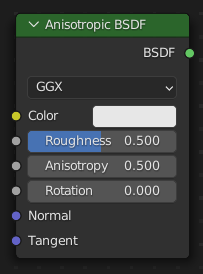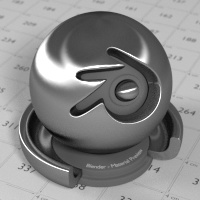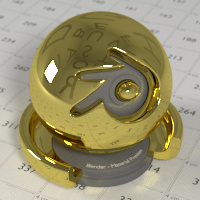Glossy BSDF¶

The Glossy BSDF node is used to add reflection with microfacet distribution, used for materials such as metal or mirrors.
Inputs¶
- 색깔
Color of the surface, or physically speaking, the probability that light is reflected for each wavelength.
- Roughness
Sharpness of the reflection; perfectly sharp at 0.0 and smoother with higher values.
- Anisotropy Cycles Only
Controls the amount the reflection stretches the reflection along the surface of the material. A value of 0.0 results in no anisotropic reflections. Higher values give elongated highlights orthogonal to the tangent direction; negative values give highlights shaped along the tangent direction.
This is a phenomenon know as “Anisotropic Reflections” which is often seen in metallic materials.
- Rotation
Rotation of the anisotropic tangent direction. Value 0.0 equals 0° rotation, 0.25 equals 90° and 1.0 equals 360° = 0°. This can be used to texture the tangent direction.
- Normal
Normal used for shading; if nothing is connected the default shading normal is used.
- Tangent
Tangent used for shading; if nothing is connected the default shading tangent is used.
특성¶
- Distribution
Microfacet distribution to use.
- GGX:
GGX microfacet distribution.
- Multiscatter GGX:
Takes multiple scattering events between microfacets into account. This gives more energy conserving results, which would otherwise be visible as excessive darkening.
- Beckmann:
Cycles Only Beckmann microfacet distribution.
Outputs¶
- BSDF
Standard shader output.
예시¶

Anisotropic shading with 0° rotation, 90° rotation and textured rotation of the tangent direction. Example blend-file.¶



